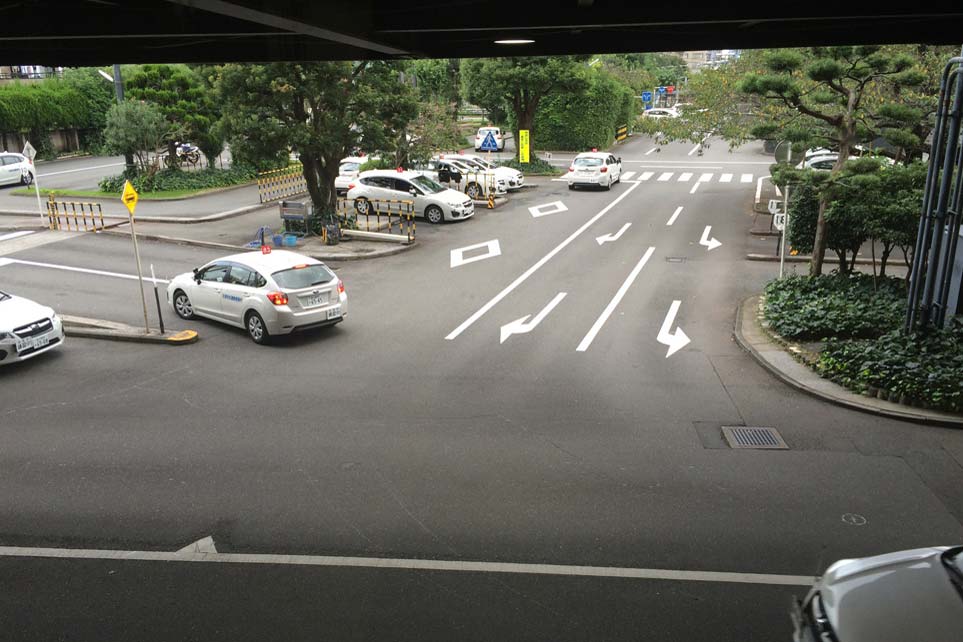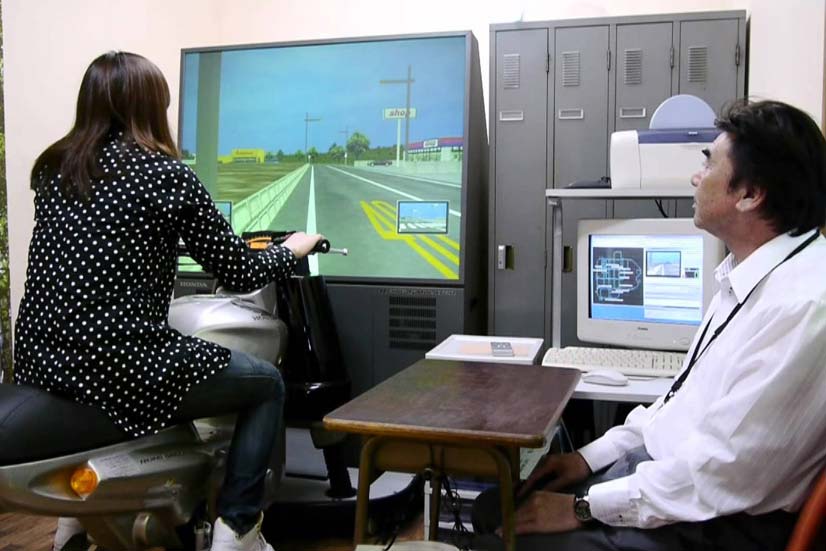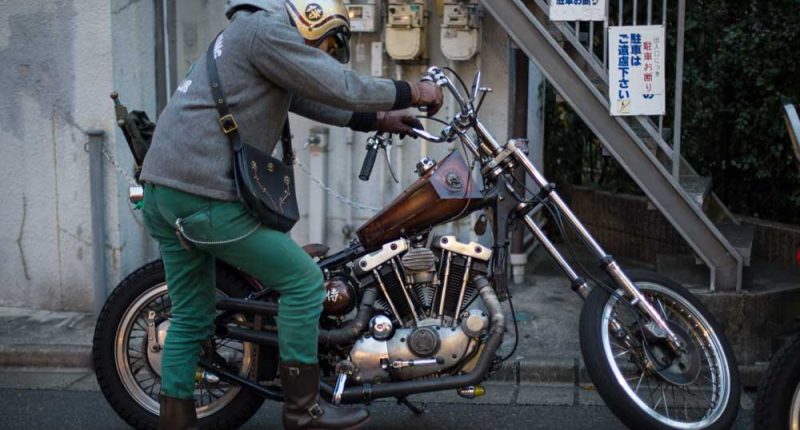If you have held a valid motorbike license in your home country for more than three months, you will be able to convert it at one of the official Driver’s License Centers. See here for more information. If you’ve never ridden before or if you have a license but don’t meet the minimum three month requirement, then here’s how to get a motorbike license in Japan. You have two basic options:
- Go directly to one of the designated test centers and take the practical test directly.
- Enroll at a driving school
The former guarantees that you fail the practical test several times before an adjudicator decides that you’ve paid the exam fees enough times and begrudgingly gives you a chance of passing; the latter almost guarantees a pass first time but is the costliest option. Whether you opt for the direct route or enroll at a driving center the test is identical: 10 minutes around a 150×150 meter car park that has been laid out with roads, a little slope, some bollards, and fake traffic lights to simulate real-road driving. If you enroll at a school you will take the test at the school, and so will be familiar with the layout and the motorbike.

The test requirements are almost identical for both medium bikes (≤399cc) and big bikes (≥400cc). One point to mention straight away—and something that surprised me—is that at no point during practice or during the test will you go out on to the roads; everything is conducted within the driving school or test center. Those that already hold a car license are exempt from certain requirements (e.g. the written test), but all candidates will need to take an aptitude test (tekisei-shiken). The result of this has no bearing on your eligibility; it is merely to let you know your personality and traits, and point out habits of which you may need to be aware when driving.
Below is the approximate cost of obtaining your motorcycle license from scratch at a driving school. Note that holding a medium bike motorcycle license is a prerequisite for joining the big bike course. By comparison, the cost of taking the examination directly at a test center is about ¥22,500 ($153). That’s ¥6,550 for the test itself and around ¥16,000 for obligatory classroom based training. See here for details (Japanese only).
| Size | Total hours | Total cost (¥) | Total cost ($) |
|---|---|---|---|
| Medium | 25-30 hours | ¥220-250k | $1,501-1,706 |
| Big | 12-17 hours | ¥120-140k | $819-955 |
| Total | 37-47 hours | ¥340-390k | $2,320-2,661 |
Total cost will typically fluctuate depending on:
- Whether or not you hold a Japanese car license (this includes foreigners who have successfully converted their foreign licence to a Japanese one)
- Booking system at the school. Lessons must be booked in advance (usually through the school’s website). On the standard package, you will be limited to a maximum number of advance bookings (about two) which means you will need to complete those lessons before you can re-book another. The weekend and evenings slots are typically booked out one week ahead, meaning that if you opt for the standard course and can only take lessons during these peak times, you will be limited to 1-2 lessons per week even if you book the next lesson immediately after finishing the last. The schools therefore offer premium courses which let students book an unlimited number of lessons in advance (of course, for an additional fee).
- Whether you pass each module first time (if you fail, you’ll need to pay to repeat that particular module).
The 10-minute practical examination consists of the following:
- Balance beam. 15 metres long; 30cm wide. To be crossed over in 7 seconds for medium bikes and 10 seconds for big bikes.
- Slalom. Slalom round a straight line of cones. Under 8 seconds for medium and 7 seconds for big bikes.
- Cattle grid. Small ramps unevenly spaced out over 8 meters. To be crossed standing on the bike in over 10 seconds (medium bikes exempt from this requirement).
- Hill start. Start from standstill on a slope without rolling backwards.
- S-curve. Navigate around an S-shaped curve. No time limit.
- Crank. Must not hit the cones on either side. No time limit.
- Emergency stop. Stop within 11 meters from 40 kmph without skidding. Distance is extended if the ground is wet.
- Rail crossing. This is a mock rail crossing at which you need to stop and check left and right before continuing.
The rest of the time is spent following a set route around the test ground so that the examiner can confirm you are indicating correctly, checking your blind spots, and stopping in a safe manner at the lights and so on. Except for the emergency stop section of the test, the maximum speed on all parts of the course is 30 kmph; however, even this is normally unachievable as at any given time there are upwards of 10 cars moving around at a snail’s pace on the same circuit. The below YouTube video for the big bike examination (which is basically the same as the medium-size bike examination) gives a good idea of the course.
The pass mark is 70%. The system is such that you start at 100% and points are then docked for errors. Instant fails are given for mistakes such as skidding when performing the emergency stop, knocking over a bollard, and falling off the balance beam.

The pass rate for those taking the test at a school is about 80% for medium-sized bikes and about 90% for big bikes. By comparison, the pass rate at the official test centers for exactly the same examination is under 5%. Admittedly, the figure is no doubt skewed somewhat by those that turn up to take the test with very little practice on the course (and sections like the balance beam do require a bit of practice to get right first time even if you have experience riding motorcycles), but the percentages leave little doubt as to the inherent bias. Anecdotally, I’ve heard that the examiners at the official test centers are often retired police officers who are extremely strict when it comes to marking examinees.
If you pass you will be informed within an hour of all other examinees finishing. You will be handed a pass certificate which you will need to take to one of the local Driver License Centers to apply for an official license or have your current license amended. This process can take upwards of three hours so you are advised to arrive early.
Finally, you should be aware that you are not allowed to carry a passenger within one year of attaining your motorcycle license (three years until you can take a passenger on the highways). Taking a passenger on the central sections of the capital freeway (shutoko) is forbidden for all riders, regardless of experience and age.



